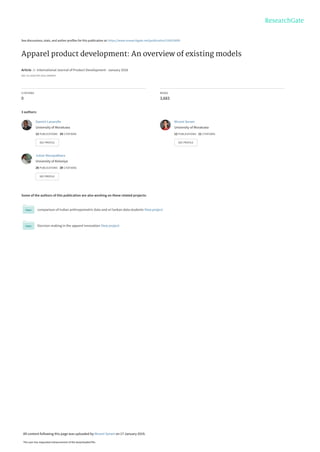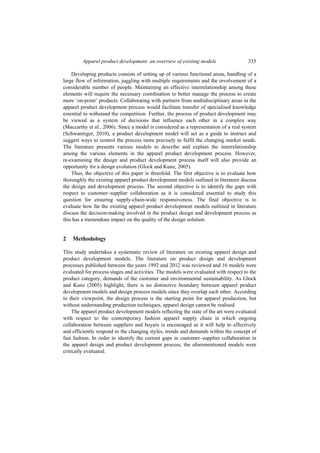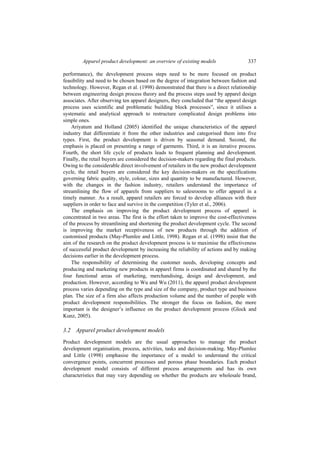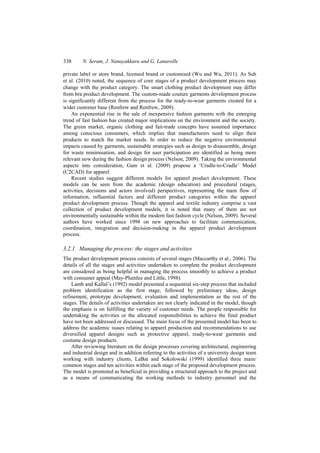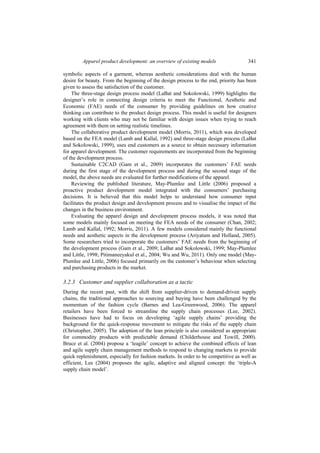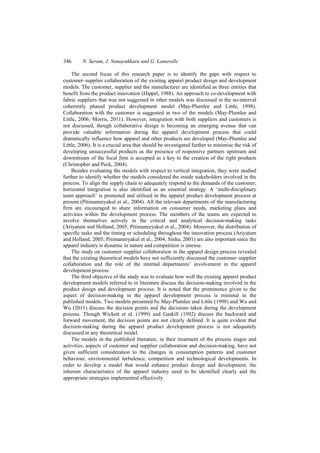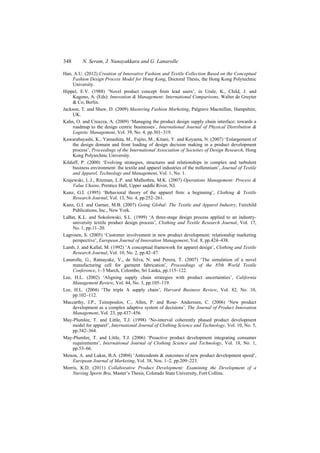This document provides an overview of existing models for apparel product development. It discusses that some existing models examine the design, design development, and style selection stages in depth, and a few consider the integration of responsible divisions. However, the models presented in literature do not adequately address customer-supplier collaboration and decision-making involved in the apparel product development process, even though many focus on the activities to complete development. The document aims to assess how comprehensively existing models discuss and analyze the development process and identify gaps regarding collaboration and decision-making.
